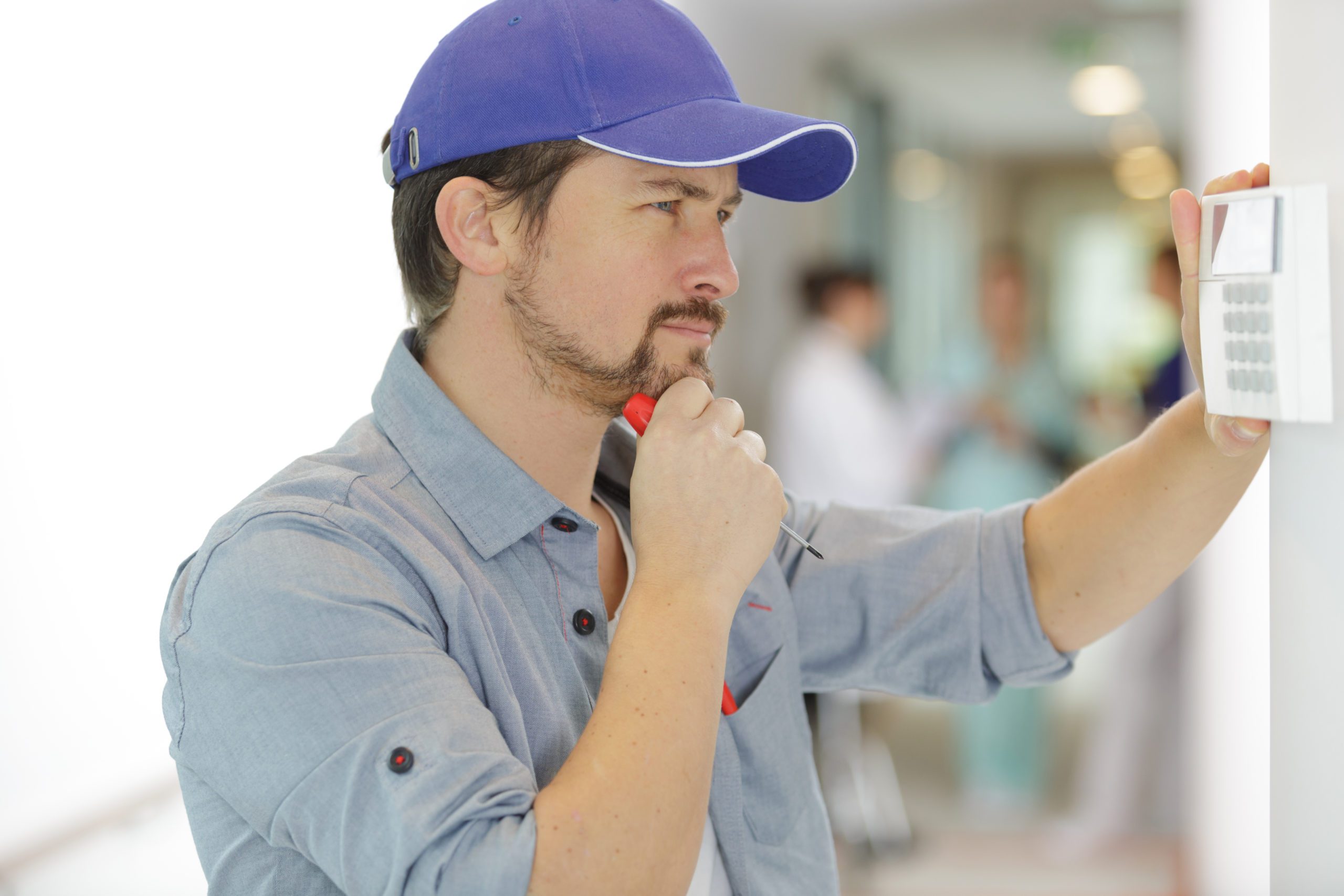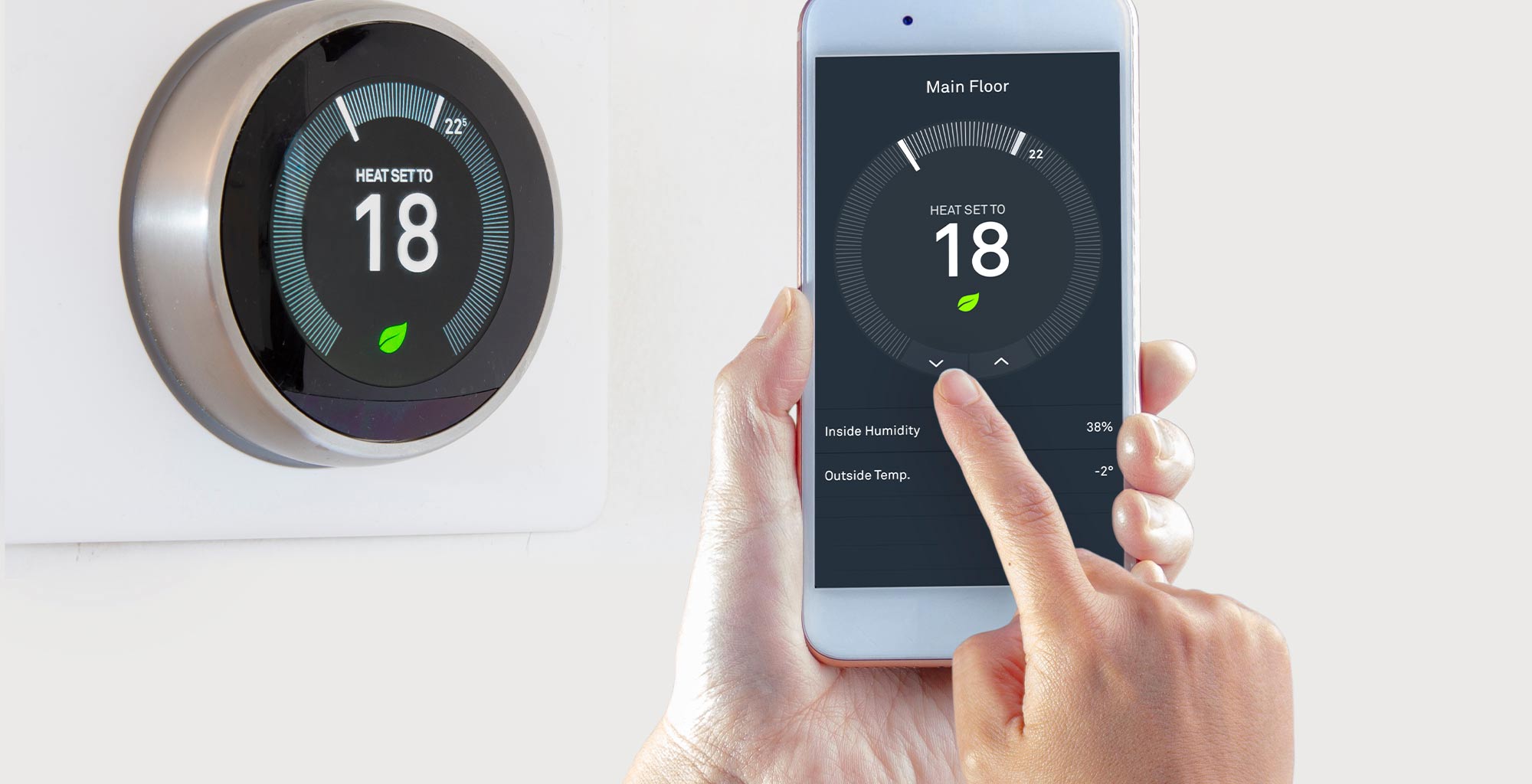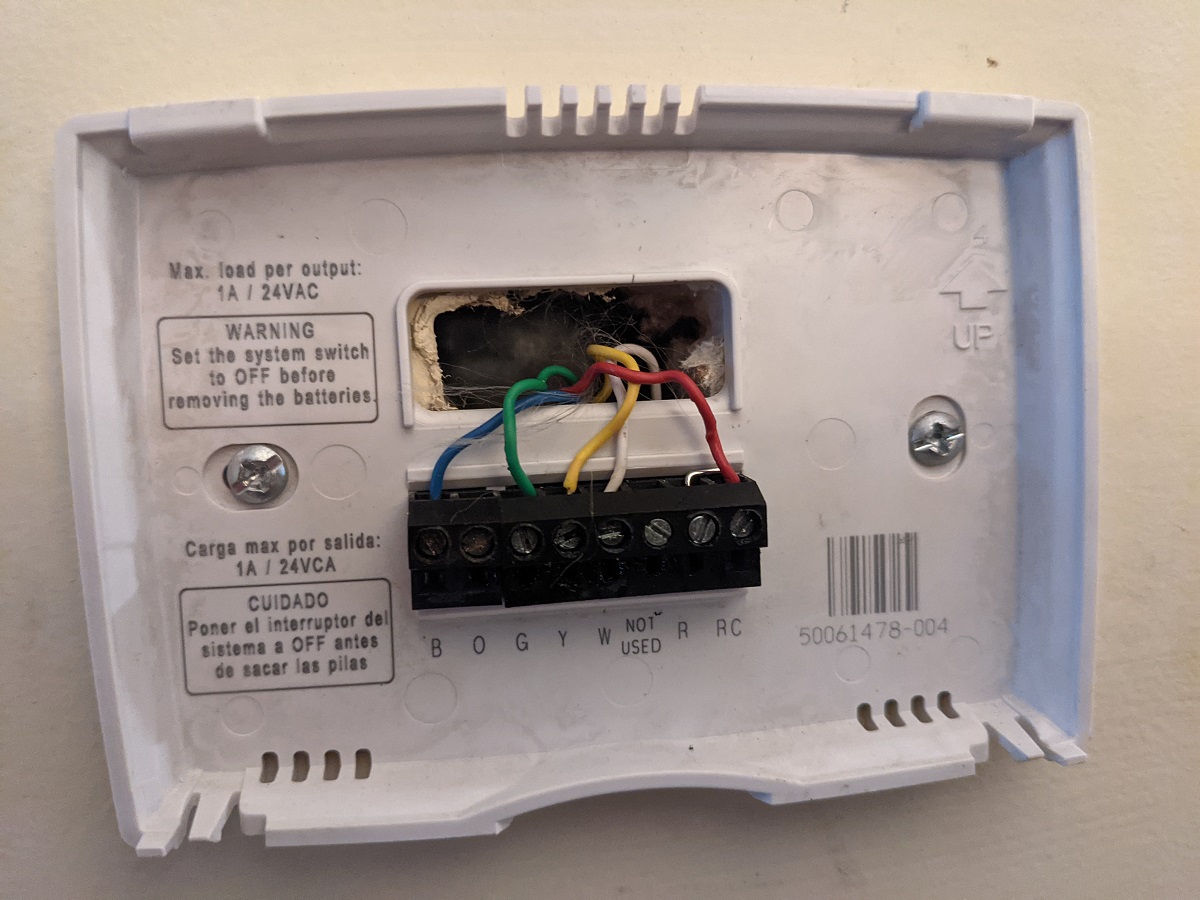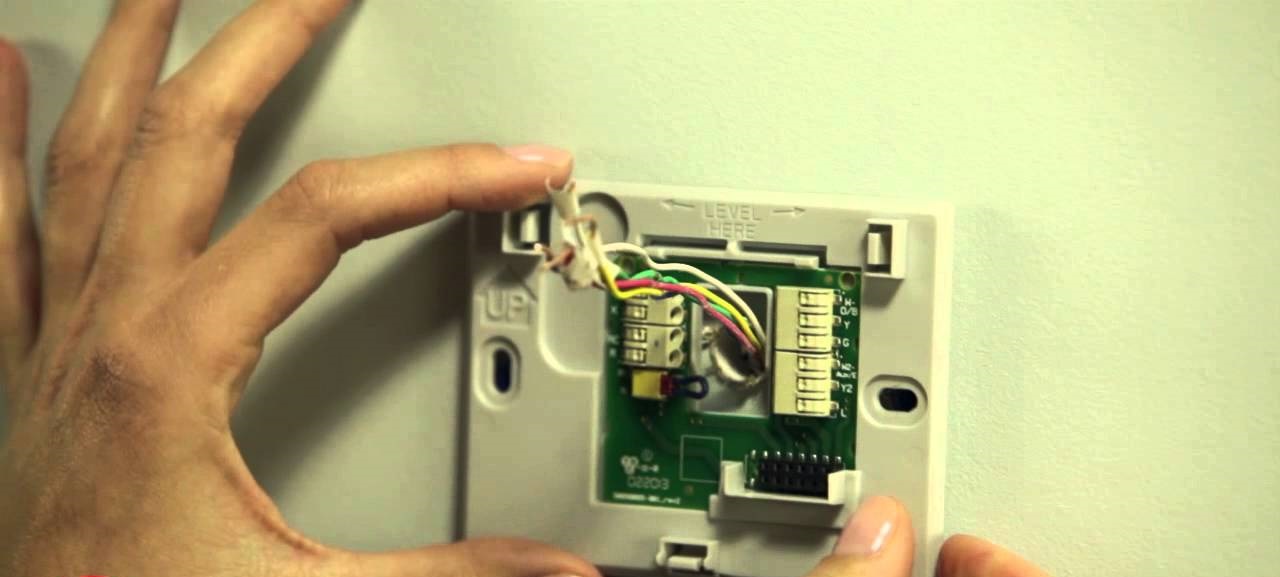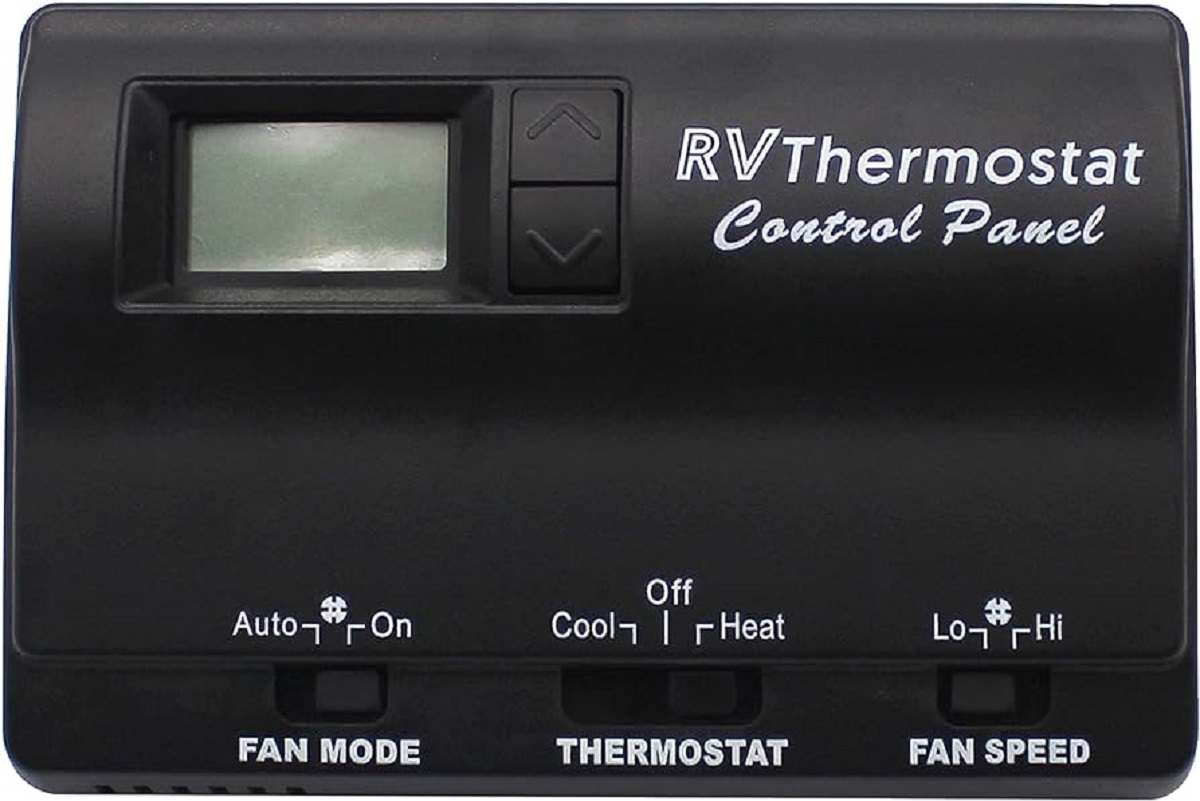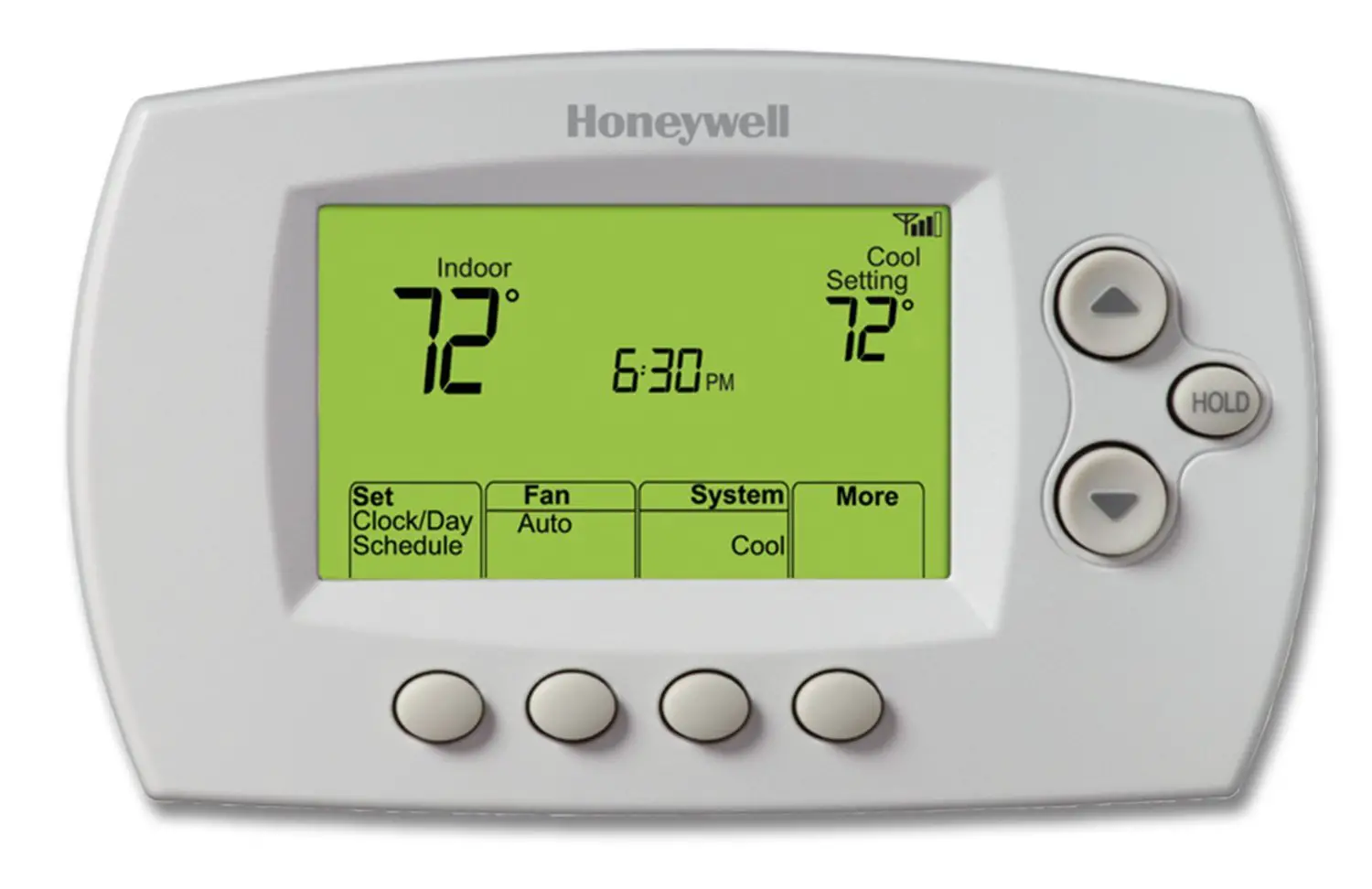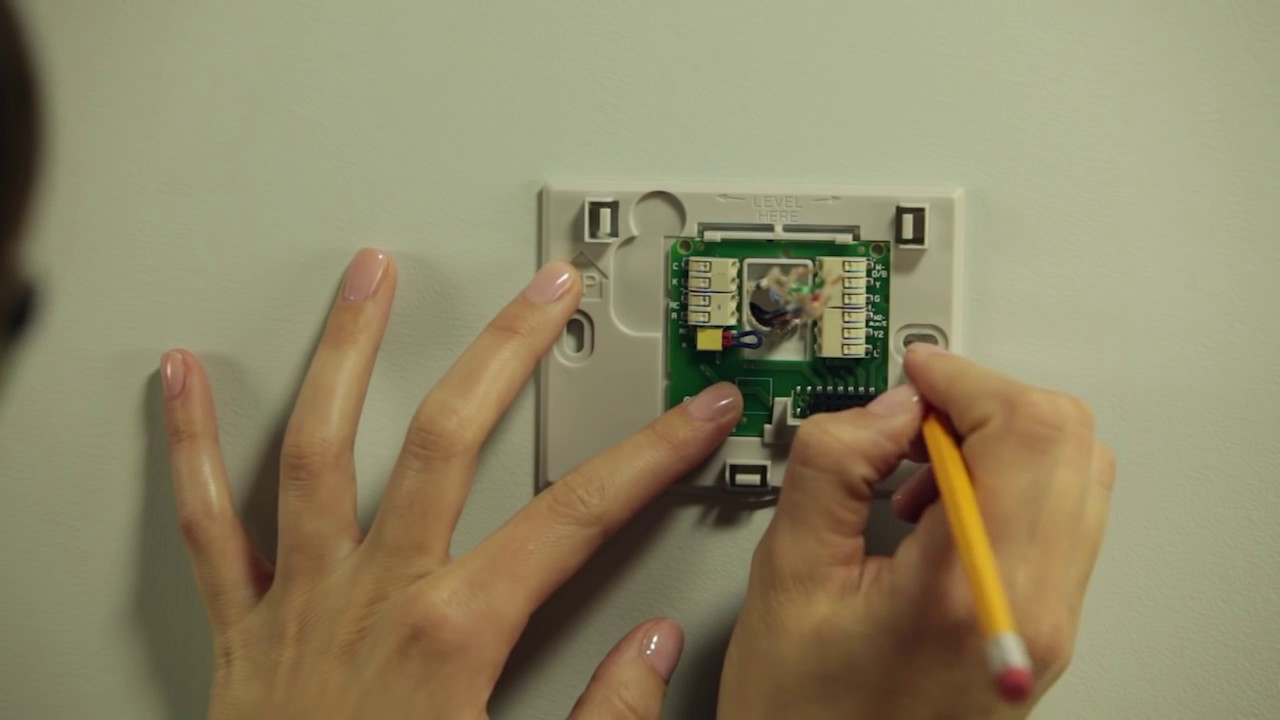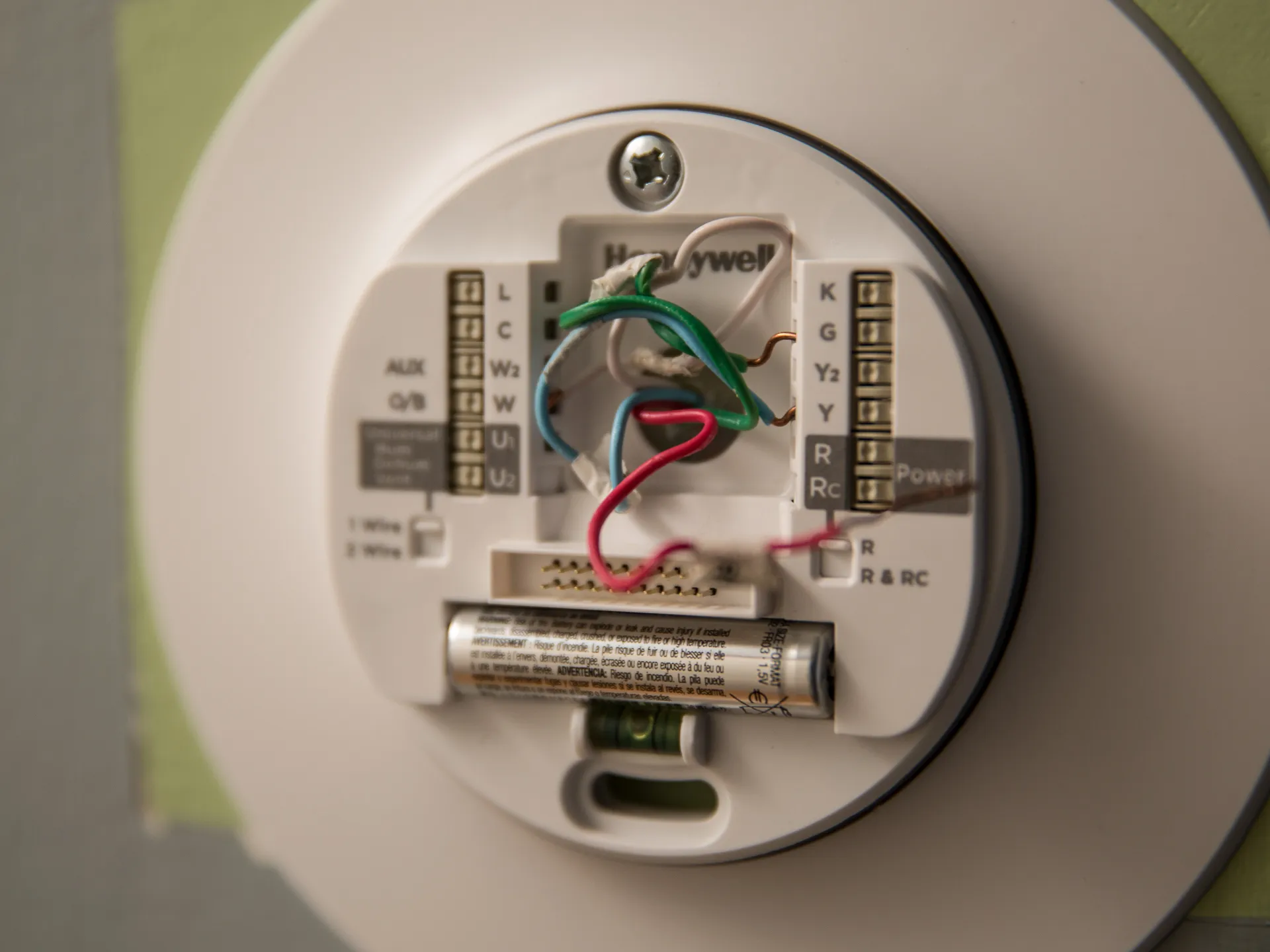Common Types of Thermostats
When it comes to installing a thermostat, there are several common types to choose from. Each type offers different features and benefits, so it’s important to understand the options available to you. Let’s take a closer look at some of the most prevalent thermostat types:
- Traditional Thermostats: These thermostats are the most basic option, typically featuring manual controls. They are easy to install and operate, making them a popular choice for many homeowners.
- Programmable Thermostats: Programmable thermostats allow you to set specific temperature schedules throughout the day. This can help you save energy and money by automatically adjusting the temperature when you’re away or asleep.
- Smart Thermostats: Smart thermostats take programmable thermostats to the next level by connecting to your home’s Wi-Fi network. This enables you to control the temperature remotely using your smartphone or computer. Some smart thermostats even have advanced features like learning your preferences and adjusting the temperature accordingly.
- Wi-Fi Enabled Thermostats: Similar to smart thermostats, Wi-Fi enabled thermostats offer the convenience of remote control. However, they may not have all of the advanced features found in smart thermostats.
- Zoned Thermostats: Zoned thermostats allow you to control the temperature in different areas or zones of your home independently. This can help optimize energy usage by only heating or cooling the areas that are being used.
- Heat Pump Thermostats: Specifically designed for heat pump systems, these thermostats are capable of controlling both heating and cooling functions. They are essential for ensuring optimal performance and energy efficiency of your heat pump system.
When considering which type of thermostat to install, it’s important to assess your specific needs and preferences. Factors such as budget, lifestyle, and the heating and cooling system in your home can all play a role in determining the best thermostat for you.
HVAC Contractors
One of the most common and reliable sources for thermostat installation is HVAC contractors. These professionals specialize in heating, ventilation, and air conditioning systems and have the expertise to install thermostats correctly and efficiently.
HVAC contractors are experienced in working with a wide range of thermostat types and models. They will assess your specific needs and recommend the best thermostat for your HVAC system. Whether you’re looking to install a traditional thermostat or upgrade to a smart thermostat, an HVAC contractor can guide you through the selection process.
One of the advantages of hiring an HVAC contractor is their in-depth knowledge of HVAC systems. They are familiar with the wiring and components involved in thermostat installation, ensuring a seamless integration with your heating and cooling system. Installing a thermostat is not a simple task, and it’s essential to have a professional handle the job to avoid any potential issues or damage.
Additionally, HVAC contractors can provide valuable insights and advice on energy-efficient thermostat usage. They can help you optimize your HVAC system’s performance and recommend settings that will save you money on energy bills without compromising comfort.
When seeking an HVAC contractor for thermostat installation, it’s important to choose a reputable and licensed professional. Look for contractors with positive reviews, certifications, and experience in handling thermostat installations. Researching and obtaining multiple quotes from different contractors can help you find the best option for your specific needs and budget.
Overall, hiring an HVAC contractor for thermostat installation offers peace of mind, ensuring that the job is done correctly and efficiently. Their expertise and knowledge of HVAC systems make them a reliable choice for a hassle-free installation experience.
Electricians
When it comes to electrical work, including thermostat installation, electricians are the go-to professionals. They have the necessary skills and expertise to handle electrical wiring and ensure a safe and reliable installation.
Electricians play a crucial role in installing thermostats, especially when it involves wiring connections. They are trained to work with electrical systems and understand the intricacies of connecting thermostats to power sources and HVAC units.
In addition to their technical knowledge, electricians can provide valuable insights and recommendations on thermostat placement. They understand the importance of locating the thermostat in an optimal position to ensure accurate temperature readings and efficient operation.
Another advantage of hiring an electrician for thermostat installation is their ability to handle any electrical issues that may arise during the process. They can troubleshoot and resolve any wiring or compatibility issues, ensuring the thermostat functions properly and integrates seamlessly with your home’s electrical system.
Electricians also ensure compliance with local electrical codes and regulations. They are knowledgeable about the specific requirements for thermostat installation, such as proper grounding and safety measures, providing you with peace of mind that the installation is up to code.
When choosing an electrician for thermostat installation, it’s important to select a licensed and experienced professional. Look for electricians who specialize in residential electrical work and have a track record of successful installations. Reading customer reviews and getting recommendations from trusted sources can help you find a reliable and skilled electrician for the job.
While electricians are well-equipped to handle thermostat installations, it’s worth noting that their expertise lies primarily in the electrical aspects of the installation. If you require additional guidance or recommendations on thermostat models and features, it may be beneficial to consult with an HVAC contractor or thermostat specialist.
In summary, electricians are skilled professionals who can handle the electrical aspects of thermostat installation. Their knowledge, experience, and adherence to safety standards make them a trusted choice for a successful and reliable installation.
General Contractors
While HVAC contractors and electricians are often the preferred choice for thermostat installations, general contractors can also handle this task. General contractors specialize in overseeing and coordinating various aspects of construction and remodeling projects, including the installation of thermostats.
General contractors have a broad knowledge base and can handle a wide range of tasks, including electrical work. While they may not have the same specialized expertise as electricians or HVAC contractors, they can still effectively install thermostats in residential or commercial settings.
One of the advantages of hiring a general contractor for thermostat installation is that they can handle the entire project from start to finish. If you’re undergoing a renovation or construction project that involves multiple aspects, hiring a general contractor can streamline the process and ensure that all components, including the thermostat, are installed seamlessly.
General contractors also have connections with subcontractors, such as electricians, which can be beneficial if any specialized electrical work is required for the thermostat installation. They can coordinate with electricians and ensure that the necessary wiring and connections are done properly.
However, it’s important to note that not all general contractors may have experience with thermostat installations. It’s essential to inquire about their previous experience and capabilities in this specific area before hiring them for the job.
When considering a general contractor for thermostat installation, it’s recommended to choose one with a solid track record of successfully completing similar projects. Look for contractors with positive reviews, relevant experience, and a strong reputation in the industry.
While general contractors may not have the same level of expertise as specialized professionals, they can still provide a reliable and efficient installation service for thermostats. Their ability to oversee and coordinate various aspects of a project can be advantageous for larger-scale installations or renovation projects that involve multiple trades.
In summary, general contractors can handle thermostat installations in addition to their other construction-related duties. While they may not have the same specialized knowledge as electricians or HVAC contractors, they can effectively coordinate and oversee the installation process, making them a viable option for certain projects.
DIY Installation
For those who are comfortable with basic electrical work and want to save on installation costs, a DIY (do-it-yourself) installation of a thermostat is an option worth considering. DIY installations allow homeowners to take control of the process and install the thermostat themselves.
Before embarking on a DIY installation, it’s important to thoroughly read and understand the manufacturer’s instructions for the specific thermostat model. These instructions will provide step-by-step guidance on how to properly install and configure the thermostat.
One of the primary advantages of a DIY installation is the cost savings. By installing the thermostat yourself, you eliminate the need to hire a professional, reducing the overall expense of the project. Additionally, DIY installations can be done at your own pace, allowing for more flexibility in scheduling.
However, it’s important to note that DIY installations may not be suitable for everyone. If you’re unsure about your electrical skills or have little to no experience with thermostat installations, it may be best to consult a professional to avoid potential safety hazards or damage to your HVAC system.
Here are some key considerations for a successful DIY thermostat installation:
- Gather the necessary tools: Before starting, ensure you have all the required tools, such as wire cutters, electrical tape, and a voltage tester.
- Turn off power: For safety reasons, always turn off the power to your heating and cooling system at the circuit breaker before starting any electrical work.
- Label existing wires: Take a photo or make note of the existing wiring connections on your old thermostat, as this will help during the installation process.
- Follow instructions: Carefully follow the manufacturer’s instructions, making sure to connect the wires correctly and securely. Double-check all connections before proceeding.
- Test functionality: Once the thermostat is installed, turn the power back on and test the functionality. Ensure that the thermostat controls the heating and cooling system as intended.
If you encounter any difficulties during the installation or you’re unsure about any steps, it’s recommended to seek advice from the thermostat manufacturer’s customer support or consult a professional for guidance.
While a DIY installation can save money, it’s essential to prioritize safety and accuracy. If you’re not comfortable with the installation process or have any concerns about your abilities, it’s advisable to hire a professional for assistance.
In summary, a DIY installation of a thermostat can be a cost-effective option if you have the necessary skills and knowledge. However, it’s crucial to follow the manufacturer’s instructions carefully and prioritize safety throughout the installation process.
Local Utilities Programs
Many local utilities and energy companies offer programs and incentives for homeowners to install energy-efficient thermostats. These programs aim to promote energy conservation and help homeowners reduce their energy consumption and utility bills.
Through local utilities programs, homeowners may qualify for rebates, discounts, or even free or highly discounted thermostats. These programs are often designed to encourage the adoption of smart thermostats, which can significantly contribute to energy savings and environmental sustainability.
Participating in a local utilities program typically involves meeting certain criteria or requirements. This may include residing within the utility’s service area, having a compatible heating and cooling system, or meeting specific energy efficiency standards.
To take advantage of these programs, homeowners usually need to submit an application and provide relevant documentation, such as proof of purchase or installation. It’s essential to familiarize yourself with the specific program guidelines and requirements to ensure eligibility and maximize potential benefits.
Local utilities programs not only encourage homeowners to install energy-efficient thermostats but also offer resources and information on how to optimize thermostat settings and energy usage. They may provide educational materials, workshops, or online resources to help homeowners understand and utilize their thermostat’s energy-saving features effectively.
Participating in a local utilities program can have various benefits, including:
- Cost savings: Rebates or discounted thermostats can provide upfront savings, while energy savings from using an energy-efficient thermostat can result in long-term savings on utility bills.
- Environmental impact: By using energy-efficient thermostats, homeowners can reduce their carbon footprint and contribute to a more sustainable future.
- Improved comfort: Smart thermostats offer advanced features like remote control and learning capabilities, allowing homeowners to customize their comfort settings and optimize their indoor environment.
- Access to resources: Local utilities programs often provide homeowners with valuable resources and information on energy conservation and efficiency.
To explore available local utilities programs, homeowners can visit the websites of their local utility companies or contact them directly. They can inquire about any current programs, eligibility requirements, and application procedures. It’s important to stay updated with the program offerings as they may change or have limited availability.
In summary, local utilities programs provide homeowners with opportunities to access energy-efficient thermostats at discounted prices or through rebates. These programs promote energy conservation, reduce utility bills, and contribute to a more sustainable future.
Thermostat Manufacturers
Thermostat manufacturers play a key role in the installation process as they supply the thermostats themselves. They offer a wide range of thermostat models with various features, designs, and compatibility options to suit different HVAC systems and user preferences.
When considering a thermostat installation, it’s essential to research and choose a reputable and reliable thermostat manufacturer. Here are some notable thermostat manufacturers:
- Nest: Nest thermostats are known for their sleek designs and advanced features, including learning capabilities that adjust the temperature based on user behavior and preferences. They also offer energy-saving features and remote control options through smartphone apps.
- Honeywell: Honeywell is a well-established and trusted manufacturer of thermostats. They offer a wide range of thermostat models, from basic programmable thermostats to smart thermostats with Wi-Fi connectivity and voice control compatibility.
- Ecobee: Ecobee thermostats are popular for their compatibility with smart home systems and voice assistants. They focus on energy conservation and comfort customization, offering features like room sensors and energy reports.
- Emerson: Emerson provides a variety of thermostats suitable for different HVAC systems. They offer programmable thermostats, smart thermostats, and Wi-Fi enabled thermostats, allowing for remote control and energy savings.
- Google: In addition to Nest thermostats, Google also manufactures its line of smart thermostats under the “Google Nest” brand. These thermostats integrate seamlessly with other Google smart home devices and offer advanced features for energy efficiency and convenience.
When choosing a thermostat manufacturer, consider factors such as compatibility with your HVAC system, desired features, and budget. It’s also helpful to read customer reviews and research the reputation and reliability of the manufacturer.
Thermostat manufacturers usually provide detailed installation instructions and support resources on their websites. These resources may include step-by-step guides, video tutorials, and troubleshooting tips, making it easier for homeowners to install their thermostats themselves.
In some cases, manufacturers may offer professional installation services or partnerships with authorized installers. This option is particularly useful for homeowners who prefer to have a trained professional handle the installation process.
Overall, thermostat manufacturers offer a wide range of options and resources for homeowners looking to install thermostats. Their products vary in terms of features, design, and compatibility, allowing homeowners to find the perfect thermostat to meet their specific needs.
Smart Home Installers
In the era of smart home automation, hiring a smart home installer can be beneficial for homeowners who want to integrate their thermostat into a larger smart home ecosystem. Smart home installers specialize in setting up and configuring various smart home devices, including thermostats, to work seamlessly together.
Smart home installers are familiar with the latest smart home technologies and can provide expert advice on the compatibility of different devices with your existing smart home system or platform. They are well-versed in the installation and setup of smart thermostats, ensuring proper connectivity and integration with other smart devices in your home.
One of the advantages of hiring a smart home installer is the convenience and expertise they bring to the table. They can handle the entire installation process, from wiring and connecting the thermostat to programming and linking it with your smart home hub or control panel.
Smart home installers can also provide valuable guidance on optimizing the functionality of your smart thermostat. They can help you automate temperature schedules, set up geofencing for smart thermostat control based on your location, and integrate voice control features for hands-free operation.
When considering a smart home installer, it’s important to choose a reputable and knowledgeable professional. Look for installers with experience in smart home installations, positive customer reviews, and certifications or partnerships with recognized smart home technology brands.
While hiring a smart home installer can be an added expense, their expertise ensures a smooth and efficient installation process. They can provide ongoing support and updates as new technologies emerge, making it easier to maximize the benefits of your smart home ecosystem.
In addition to thermostat installation, smart home installers may offer additional services, such as setting up smart lighting, home security systems, and audio/video integration. By hiring a smart home installer, you can leverage their expertise to create a comprehensive and customized smart home experience.
If you’re interested in installing a smart thermostat or expanding your existing smart home capabilities, consulting with a smart home installer can help you navigate the complexities of compatibility and integration. They can help you select the right smart thermostat for your needs and ensure a seamless installation that enhances your home’s energy efficiency, convenience, and comfort.
Energy Efficiency Programs
Energy efficiency programs are initiatives offered by government agencies, utility companies, and other organizations to encourage homeowners to reduce their energy consumption and environmental impact. These programs often include incentives for installing energy-efficient thermostats, making them a valuable resource for homeowners.
Energy efficiency programs typically aim to promote the use of smart thermostats, which offer advanced features and capabilities for optimizing energy usage. By participating in these programs, homeowners can not only save money but also contribute to sustainability efforts.
One of the main benefits of energy efficiency programs is the financial incentives they offer. Homeowners may be eligible for rebates, tax credits, or lower utility rates when they install energy-efficient thermostats. These incentives help offset the initial cost of the thermostat and provide additional savings in the long run through reduced energy bills.
In addition to financial incentives, energy efficiency programs often provide resources and education on energy conservation and proper thermostat usage. This can include tips on setting energy-saving temperature schedules, utilizing smart features like geofencing, and participating in demand response programs.
Energy efficiency programs may require homeowners to meet specific criteria to qualify for incentives. This could include residing in a certain area, using a qualified thermostat model, or demonstrating energy savings through an efficiency audit. It’s important to familiarize yourself with the program guidelines and requirements to ensure eligibility and maximize the benefits.
Participating in energy efficiency programs not only helps homeowners save money and reduce their environmental impact but also contributes to the overall goal of a more sustainable future. By installing energy-efficient thermostats, homeowners play a part in reducing greenhouse gas emissions, conserving natural resources, and addressing climate change.
To access energy efficiency programs, homeowners can check with their local utility company, government agencies, or visit energy efficiency program websites. These resources provide information on available programs, eligibility criteria, and application procedures. Some programs may require a professional installation, while others may allow for DIY installations with appropriate documentation.
In summary, energy efficiency programs offer homeowners a chance to save money and reduce their environmental footprint by installing energy-efficient thermostats. These programs provide financial incentives, resources, and education on energy conservation, helping homeowners make informed decisions and actively contribute to sustainable living.







